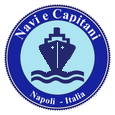 |

|
 |
 |
|
Cacciatorpediniere
|
|
Destroyer
|
||
|
SHEFFIELD
|
||||
| Bandiera | Flag | Regno Unito - United Kingdom | |||||||
| Armatore | Owner | Ministero della Difesa - Ministry of Defence | |||||||
| Operatore | Manager | Royal Navy | |||||||
| Impostazione chiglia | Keel laid | ||||||||
| Varo | Launched | 10.06.1971 | |||||||
| Entrata in servizio | In service | 28.02.1975 | |||||||
| Cantiere navale | Shipyard | Barrow-in-Furness - | |||||||
| Costruzione n. | Yard number | ||||||||
| Tipo di scafo
|
Hull type | scafo singolo - single hull | |||||||
| Nominativo Internazionale | Call Sign | ||||||||
| I.M.O. International Maritime Organization | |||||||||
| M.M.S.I. Maritime Mobile Service Identity | |||||||||
| Numero d'identificazione | ID Number | D 80 | |||||||
| Porto di base | Home Port | ||||||||
| Posizione attuale | Actual position |
CLICCA
QUI / CLICK HERE
|
|||||||
|
Dislocamento max |
DWT max | 3.150 Tonn | |||||||
| Lunghezza max | L.o.a. | 125,0 m | |||||||
| Larghezza
max |
Breadth max | 14,63 m | |||||||
| Altezza di costruzione | Depth | ||||||||
| Pescaggio
max |
Draught max | 5,18 m | |||||||
| Motore principale | Main Engine | 4
- Rolls Roice - 2 - turbine/turbins COGAG |
|||||||
| Potenza Motori | Engine Power | 54.000 Hp | |||||||
| Eliche di propulsione | Propellers | 2 - | |||||||
| Velocità massima | Max speed | 30,0 kn | |||||||
| Armamento | Arms | 1
- lanciamissili/missile lauchers MK
30 Vikerd Mod. 2 1 - cannone/gun 114/55 MK 8 2 - mitragliere/gun machines OERLIKON 20 mmm 1 - elicottero A.S./helicopter A.S. |
|||||||
| Strumentazioni
elettroniche |
Electronic
equipments |
1
radar di scoperta aerea/air radar Type 965R 1 radar designazione bersagli/fire radar Type 992Q 2 radar guidamissili Sea Dart Type 909 1 radar di navigazione e controllo elicotteri Type 1006 1 sonar a scafo a media frequenza Type 184M, 1 sonar classificazione bersagli Type 162M 1 telefono subacqueo Type 185 2 sistemi satellitari SCOTT 1 sistema elaborazione dati ADAWS 2 |
|||||||
| Autonomia | Range | 4.000 nm a/at 18,0 kn | |||||||
| Equipaggio | Crew | 287 | |||||||
| Navi gemelle | Sister ship | ||||||||
| Affondata | Sunk |
04.05.1982
|
|||||||
| Inserita |
Posted |
31.12.2010
|
|||||||
| Aggiornata | Last updated |
31.12.2010
|
|||||||
This
unit was leader of the Type 42 destroyer. It was launched in June
1971 and entered service in February 1975. These units were designed
to create a navy to defend against attacks from the sky. They were
equipped with Sea Dart missile system surface-to-air and carrying
an anti-submarine helicopter.
|
|||||||||